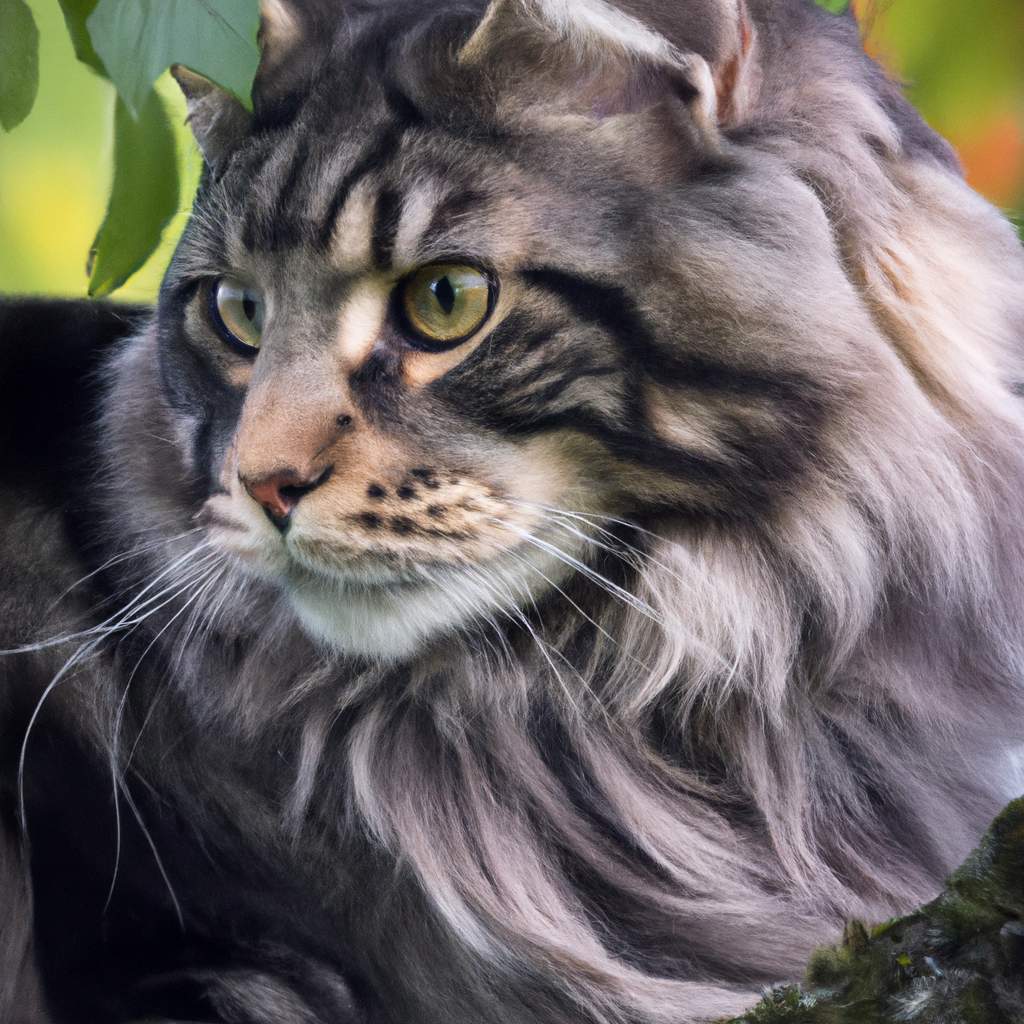The Maine Coon is called a Maine Coon because it was first discovered in Maine during the 1800s. In 1985, it became the official state cat of Maine. The second part of its name, « Coon, » has a murkier history. One theory suggests that it originated from the belief that Maine Coons were the result of a cross between raccoons and domestic cats, although this is scientifically impossible. Another theory suggests that the name may have come from a racial slur. However, the exact origin of the name remains unknown. Maine Coons are known for their large size, weighing between 8 to 25 pounds on average. They are also known for their beauty, friendliness, and loveability, which may contribute to their high price. Despite their popularity, Maine Coons are sometimes called by different names, including Maine cat, American longhair, and Mane Coon.
What Breeds Make A Maine Coon Cat?
The Maine Coon, a well-known cat breed today, has an interesting history that may be linked to the cats of Vikings. While there have been various theories about the origins of Maine Coons, one possibility is that they are descendants of Viking cats. Vikings kept Norwegian Forest Cats, which share some similarities with Maine Coons such as their large size, wide paws, and long, thick fur. DNA testing has shown a genetic relationship between Maine Coons and Norwegian Forest Cats. It is believed that these Viking cats either accompanied their owners to North America or escaped and found their way to Maine. To learn more about the comparison between Norwegian Forest Cats and Maine Coons, including their size differences, check out this article.
Why Are Maine Coons So Big?
Maine Coons are known for their large size, weighing between 8 to 25 pounds on average. The reason behind their larger stature can be attributed to both their ancestry and environment. As descendants of the Norwegian Forest Cat, it is no surprise that Maine Coons are also big. The Norwegian Forest Cat itself is believed to have developed its large size through selective breeding and adaptation to the cold climate it originated from. Similarly, Maine Coons originated in cold, snowy climates, and it is thought that larger and stronger individuals were more likely to survive in such harsh conditions. The development of their large, wide paws, sometimes with extra toes, can also be seen as an adaptation to facilitate hunting and walking on snow. To learn more about the size differences between regular cats and Maine Coons, you can refer to the provided guide.
How Were Maine Coons Created?
The Maine Coon cat is believed to have developed naturally, unlike most dog breeds that were selectively bred for certain traits. The history of the Maine Coon is unclear, but the most likely theory is that the cats of Vikings landed in North America and interbred with feral or domestic cats in Maine. Over time, the cats better adapted to the cold climate with their thick fur and snowshoe-like paws were more likely to survive and reproduce. Farmers and sailors recognized their size and hunting abilities, and eventually kept them for their loving nature and companionship. Today, there are two distinct styles of Maine Coon cats: American and European. American Maine Coons have softer features, while European Maine Coons have more square features. These styles are likely the result of selective breeding among enthusiasts of the breed. To learn more about these types of Maine Coon cats, you can read my article on European Maine Coon Vs American Maine Coon.
Maine Coon Cat Life Cycle
The Maine Coon breed of cats are known for their robust health and typically have a lifespan of 12 to 15 years. However, if you want your Maine Coon to live longer, it is recommended to keep them indoors. Outdoor cats face various risks such as cars, diseases, poison, and local predators, which significantly shorten their lifespan. In fact, a study showed that outdoor cats typically live only 2 to 5 years on average.
Although Maine Coons originated in the wild and used to rely on hunting for enrichment, many owners are concerned about providing the right lifestyle for an indoor cat. To address this, some owners build outdoor enclosures or « catios » to give their cats a taste of outdoor experience. Alternatively, you can make the indoor environment more exciting for your Maine Coon by providing large cat trees, interactive toys, and even creating obstacle courses along the walls. These activities cater to their natural instincts for climbing, running, and hunting.
If you still want to give your cat a taste of the outdoors, you can consider taking them on hikes using a cat backpack or even teaching them to walk on a leash and harness. This way, you can provide them with supervised outdoor experiences while keeping them safe from potential dangers.
Overall, keeping your Maine Coon indoors is the best way to ensure a longer and healthier lifespan for your beloved feline companion.
Conclusion
The Maine Coon cat is named after its state of origin, Maine, in the United States. It became so popular that it was even named the official state cat of Maine in 1985. The second part of its name is believed to come from a myth that these cats were the result of raccoons and domestic cats reproducing. Although this myth is not true, the Maine Coon’s bushy, ringed tail might make you understand why people once believed it.
Related Questions
Do Maine Coon Cats Come From Maine?
The Maine Coon is believed to have originated from ship cats, potentially those owned by Vikings, that came to the state of Maine in the United States. These ship cats bred with local domestic cats, leading to the creation of the Maine Coon breed.


